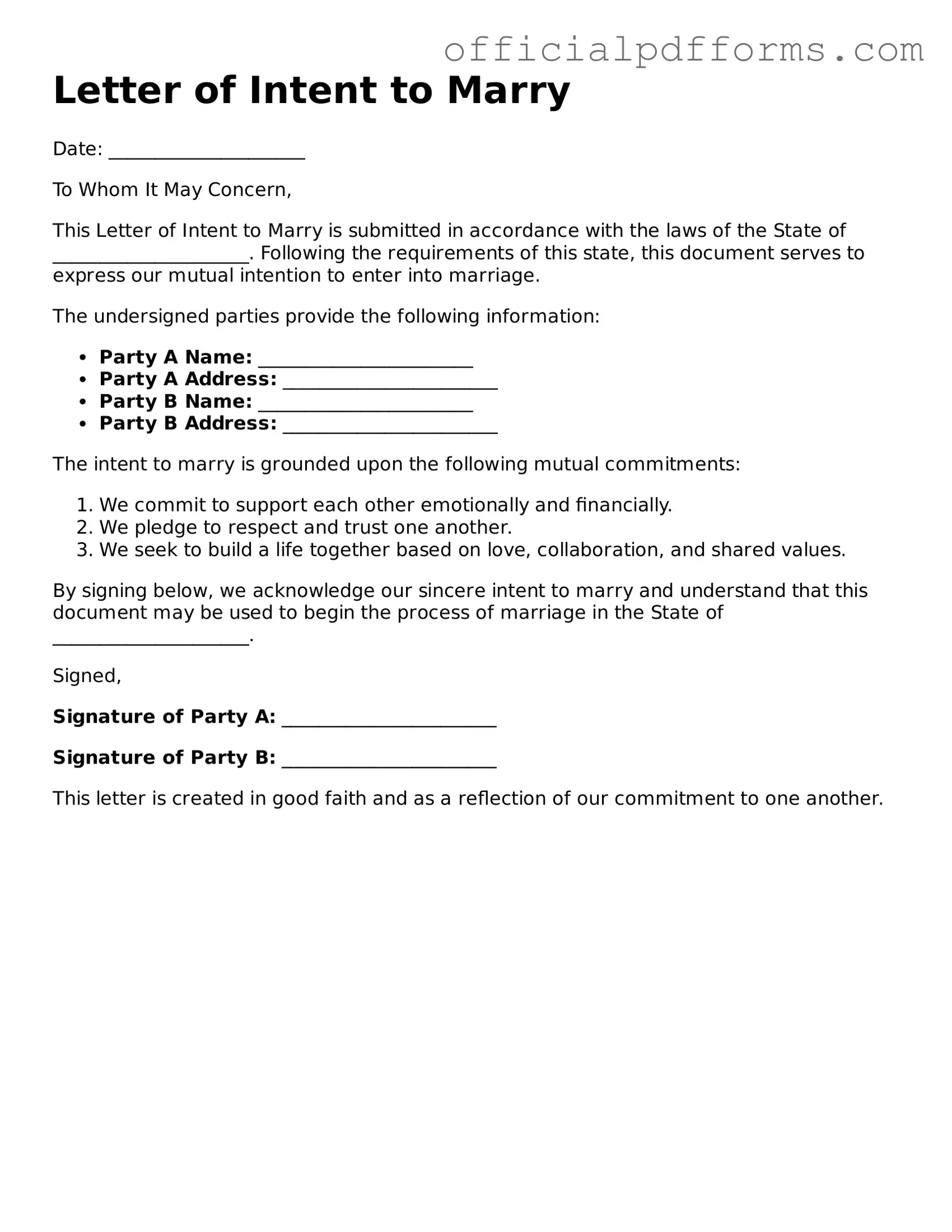Steps to Filling Out Letter of Intent to Marry
After obtaining the Letter of Intent to Marry form, you are ready to complete it. This form typically requires some personal information about both individuals intending to marry. Ensuring accuracy and clarity in your responses is essential, as this document may be used for various purposes, including legal or ceremonial considerations.
- Start by writing your full name in the designated field. Include your first, middle, and last names.
- Next, provide your date of birth. Make sure to format it correctly, usually as month/day/year.
- Fill in your current address. Include the street number, street name, city, state, and ZIP code.
- Indicate your partner's full name in the next section, following the same format as yours.
- Provide your partner's date of birth in the same manner as you did for yours.
- Fill in your partner's current address, ensuring all details are accurate.
- Review any additional questions or sections that may require information, such as previous marriages or legal issues.
- Sign and date the form at the bottom. Make sure to do this in the presence of a witness if required.
Once you have completed the form, it’s advisable to keep a copy for your records. Depending on local requirements, you may need to submit it to a specific office or present it during a marriage ceremony. Be sure to check the guidelines relevant to your location.
